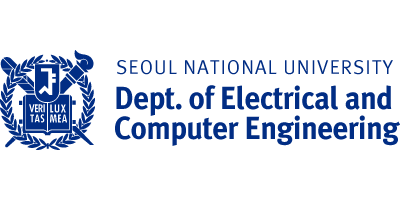Prof. Hyuk-Jae Lee, China’s semiconductor chase, Should outstrip them through R&D investment (The Munhwa Il-bo, 20180726)

SNU ECE Prof. Hyuk-Jae Lee, specializing in semiconductors
Recently, there have been successive predictions that the price of semiconductors will fall after reaching its peak. The spot price of D-RAM, which was more than 9 dollars last January, has recently dropped to less than 8 dollars. The price of NAND flash also dropped 17.5% compared to earlier this year. In such fashion, the super boom of semiconductors is coming to an end after two years, and the prediction that the game of chicken to compete for market shares through intense price dumping is becoming more and more convincing.
Last year, semiconductor exports amounted to 99.7 billion dollars, making up 17.4% of Korea’s total export 573.7 billion dollars. It is estimated that out of the 14.8 trillion dollars business profit of Samsung Electronics’ second quarter this year, the semiconductor division accounts for 80%. The reason why the semiconductor business could maintain its super boom was because the core technologies of the Fourth Industrial Revolution such as AI and Big Data used immense data in their application, and therefore, led to the explosive increase in the demand of memory semiconductors for storage. Based on the dominant market share in the memory semiconductor field, taking up over 70% of D-RAM and 45% of NAND flash, Korea’s semiconductor companies have never been as prosperous as now.
However, the aggressive investment of the Chinese government under the catchphrase ‘the rise of semiconductors’ is posing a severe threat. China, which is the world-wide semiconductor market’s largest source of demand, imported 260.1 billion dollars-worth of semiconductors and consumed 65% of the world’s semiconductor products. China is aiming to raise its semiconductor self-sufficiency rate from the current 10% to 70% by 2025. The government is investing 177 trillion dollars and the results are gradually appearing. China’s Fujian Jinhua Integrated Circuit will begin their D-RAM production this September, and Tsinghua Unigroup is anticipating the release of NAND flash memory during the upcoming fourth quarter.
Although there still exists a technical gap compared to Korean companies, once products are launched into the market, the gap will narrow down. By 2020, it is predicted that the production of China’s D-RAM businesses will be 420 thousand. As a result, the impact of the over-supply will affect domestic businesses. In the case of the display business, which has received a direct hit from the price dumping of Chinese companies, LG Display has recorded a 228.1 billion dollar business loss only during the second quarter this year. The future of the display business, which once led Korea’s industry along with semiconductors, is now under question.
It is urgent that Korea shakes off China’s ferocious chase and prepare for a new leap in the semiconductor business. First of all, it is necessary to aggressively invest in R&D to maintain the technological upper hand of memory semiconductors. In order to maintain price competitiveness even throughout low cost attacks, semiconductor manufacturing technology should be advanced further and new generation memory devices, with high added value, and application products should be developed.
Also, it is necessary to expand the business to not only memory semiconductors but also system semiconductors. Recently, Samsung Electronics and SK Hynix devised a strategy to expand the foundry business for the entrusted production of semiconductors. For such developments in the foundry business, it is important to activate related systems. Thus, the role division and cooperation between major companies, the government, small and medium-sized companies, research centers, and universities is important. The development of system semiconductors will be possible with the investment of major companies, the government-led activation of semiconductor company establishments, cultivating semiconductor related human resources, and R&D for base technology development.
It is hoped that upcoming hardships can be tackled through such preparations and that it will be possible to welcome a second super boom in semiconductors.
Source: http://ee.snu.ac.kr/community/news?bm=v&bbsidx=47694
Translated by: Jee Hyun Lee, English Editor of the Department of Electrical and Computer Engineering, jlee621@snu.ac.kr


